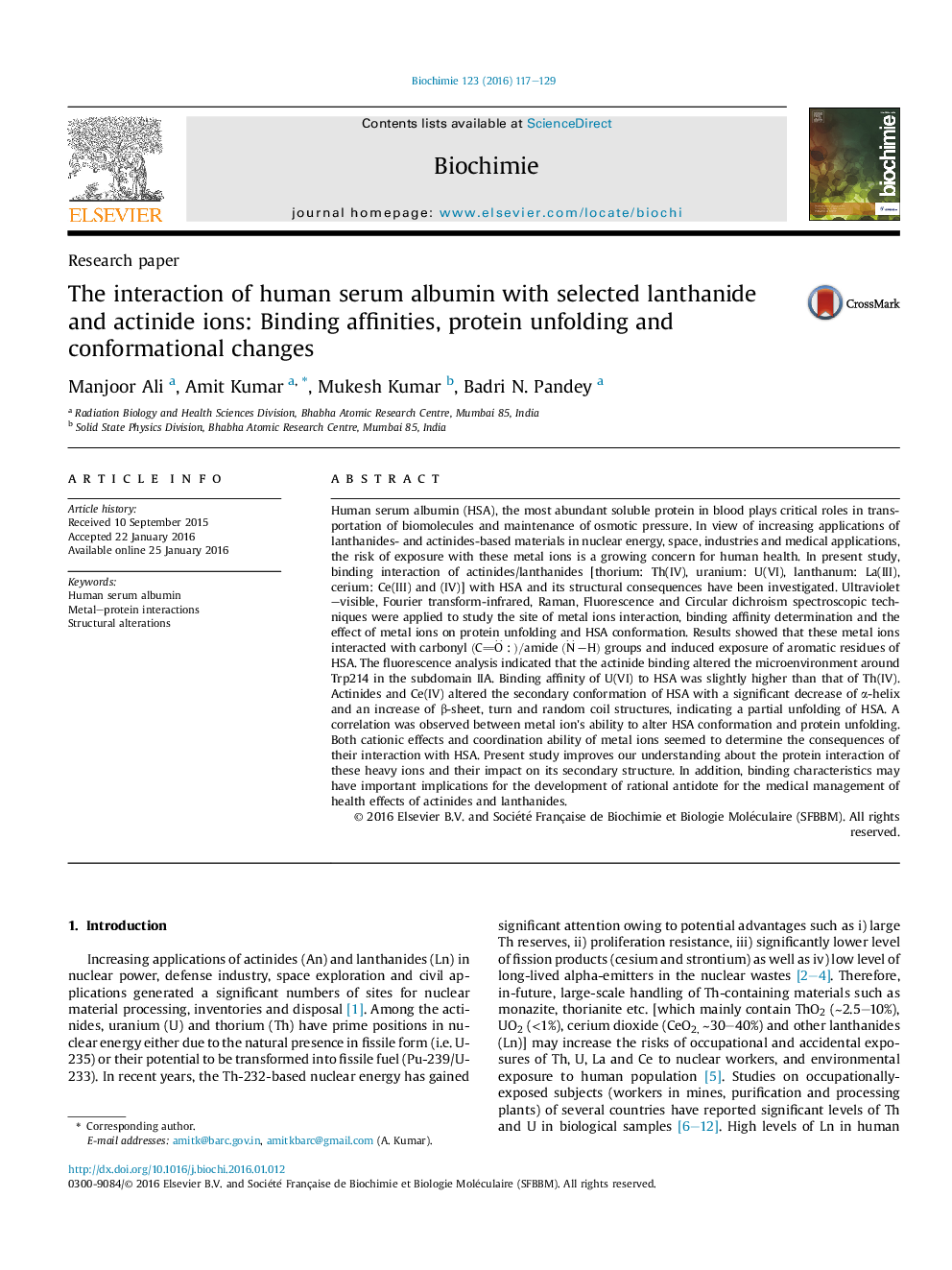| کد مقاله | کد نشریه | سال انتشار | مقاله انگلیسی | نسخه تمام متن |
|---|---|---|---|---|
| 1951900 | 1538408 | 2016 | 13 صفحه PDF | دانلود رایگان |
• Actinides (An) interact with peptide groups of HSA more effectively than lanthanides.
• Actinide's interaction causes exposure of aromatic residues from interior of HSA.
• Protein unfolding and alteration in secondary conformations of HSA are studied.
• Binding constants (Log Kb) of actinides with HSA are in the range of 4.1–4.2.
• Charge effects and complexation ability of An seem to determine their effects on HSA.
Human serum albumin (HSA), the most abundant soluble protein in blood plays critical roles in transportation of biomolecules and maintenance of osmotic pressure. In view of increasing applications of lanthanides- and actinides-based materials in nuclear energy, space, industries and medical applications, the risk of exposure with these metal ions is a growing concern for human health. In present study, binding interaction of actinides/lanthanides [thorium: Th(IV), uranium: U(VI), lanthanum: La(III), cerium: Ce(III) and (IV)] with HSA and its structural consequences have been investigated. Ultraviolet–visible, Fourier transform-infrared, Raman, Fluorescence and Circular dichroism spectroscopic techniques were applied to study the site of metal ions interaction, binding affinity determination and the effect of metal ions on protein unfolding and HSA conformation. Results showed that these metal ions interacted with carbonyl (CO..:)/amide(N..–H) groups and induced exposure of aromatic residues of HSA. The fluorescence analysis indicated that the actinide binding altered the microenvironment around Trp214 in the subdomain IIA. Binding affinity of U(VI) to HSA was slightly higher than that of Th(IV). Actinides and Ce(IV) altered the secondary conformation of HSA with a significant decrease of α-helix and an increase of β-sheet, turn and random coil structures, indicating a partial unfolding of HSA. A correlation was observed between metal ion's ability to alter HSA conformation and protein unfolding. Both cationic effects and coordination ability of metal ions seemed to determine the consequences of their interaction with HSA. Present study improves our understanding about the protein interaction of these heavy ions and their impact on its secondary structure. In addition, binding characteristics may have important implications for the development of rational antidote for the medical management of health effects of actinides and lanthanides.
Figure optionsDownload high-quality image (313 K)Download as PowerPoint slide
Journal: Biochimie - Volume 123, April 2016, Pages 117–129
